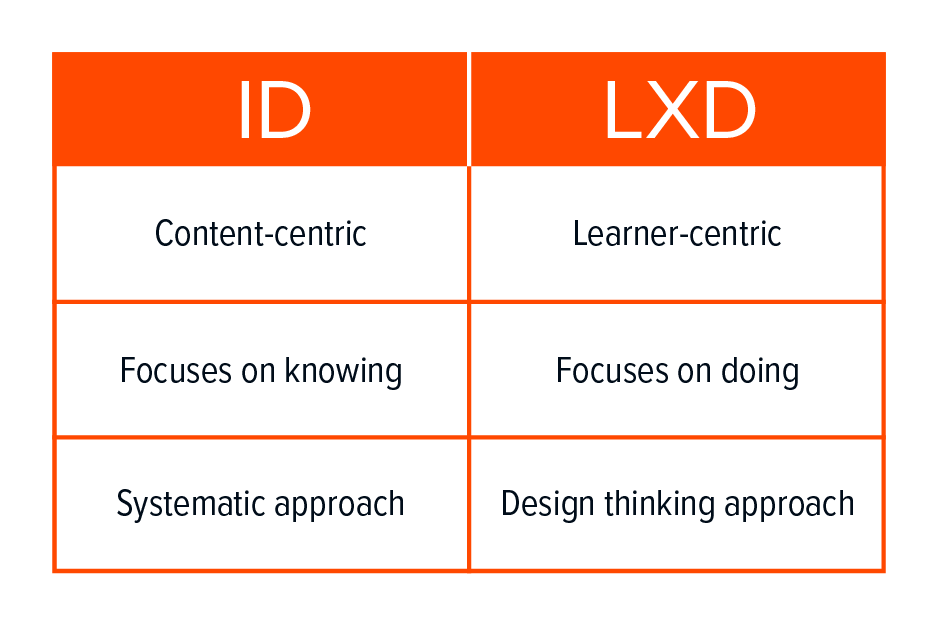Discover how the skill set of Instructional Designers (IDs) and Learning Experience Designers (LXDs) contributes to better learning design.
The current economic climate is uniquely challenging—in addition to rumors about a downturn, executives are dealing with the highest inflation rate in decades combined with a severe talent shortage. During this challenging time, outsourcing and staff augmentation have provided a beacon of hope and flexibility to organizations looking to steady the ship. Outsourcing has been embraced by a variety of industries since the early 90s. As the gig economy has picked up steam, contractors have become not only increasingly available but also more knowledgeable and professional.
Over the last few years, ELB Learning has provided vendor-managed services or contract resources to many global brands. Such companies have enjoyed undisrupted L&D for their workforce while meeting their training goals and learning objectives. Being an industry leader in contractor placement, we have noticed a steady demand for Instructional Designers and Learning Experience Designers, especially since early 2020.
Both these titles are significant for organizational L&D for the length and breadth of expertise they bring to curriculum design. In this blog post, we’ll shed light on their unique skill set, how both matter in learning design, and why you should join the wave in hiring Instructional Designers and Learning Experience Designers as your next contract resources.
Let’s take it from the top and explore the difference between instructional design and learning experience design—ID versus LXD:

Simply put, “ID is the creation of instructional experiences which make the acquisition of knowledge and skills more efficient, effective and appealing.”
- Merrill, Drake, Lacy, Pratt.
And LXD is “The learner-centered process of facilitating the learning and application of knowledge and skills (expertise, proficiency) by providing a set of learning activities (formal, informal and experiential) supported by content, feedback and technology.”
- Marty Rosenhack
While there is a difference, it is vital to remember that good IDs know and practice learning experience design, and ID is an important part of LXD. Both methods combined help learners receive learning—through effective content and design, both via quality and quantity.
When you hire from the right contractor placement service provider, the outsourced talent will deliver effective instructional design with your learning curriculum, creating training that:
- Increases knowledge transfer
- Engages learners (through the mind and not just through the fingers)
- Communicates clear, concise messages
- Prompts learners to act (to move up to a level of mastery)
- Contributes to the achievement of learning goals
IDs and LXDs are key drivers of the behavior change your organization aspires for with your workforce. Their skill set is uniquely positioned to create and deliver training that captures the three dimensions of learner engagement—cognitive, behavioral, and emotional.
Through an approach of storytelling, content curation, scripting, design, learning strategy, storyboard writing, and more, IDs and LXDs are best suited to solve the learning challenge at hand and deliver better learning experiences and outcomes. Further, the intelligent use of learning theories by IDs assists to deliver better LXD. Based on the business objectives, your contract resources will look to deploy one of these theories most viable to achieving your goals—social learning theory, situated cognition, novice to expert theory, or cognitive behavioral theory—all of which are time-tested with proven results.
The Role of ID and LXD in User Experience Design
Before designing learning courses, IDs and LXDs take into account these aspects of User Experience Design, which have the potential to make or break your learning curriculum!
- Human interaction (mind not fingers)
- Usability
- Accessibility
- Design aesthetics
- Utility
- Performance
In the previous section, we insisted on engaging with the right contractor placement service provider. This means that the chosen partner must have access to a pool of vetted and experienced contractors which helps in the seamless integration into your L&D team to fetch you results from Day 1. This requirement is not a luxury but a critical necessity. When you engage with experienced and professional contractors, there is a limited scope of ID going wrong.
Here are some of the red flags to bear in mind when engaging with outsourced designers:
- Focusing on the tech rather than the objectives
- Skipping the needs assessment before designing the courses
- Overloading course information
- Providing unclear instruction/ambiguous navigation
- Including irrelevant imagery
- Not following through
Whether your organization is going through a hiring freeze or layoffs, ELB Learning can offset your challenges associated with learning and development. With a vetted pool of over 2500 talented learning and development consultants, hire immediately, plug staffing gaps, and meet project deadlines. ELB Learning provides the experienced learning and development resources you need with the industry expertise you expect. The cost savings and scalability of Staff Augmentation make it a logical choice for one-time projects or long-term learning and development initiatives.
Save time, work with the best and hire top-tier consultants—We can provide you with the perfect fit! Speak with our staffing expert today and get started.







